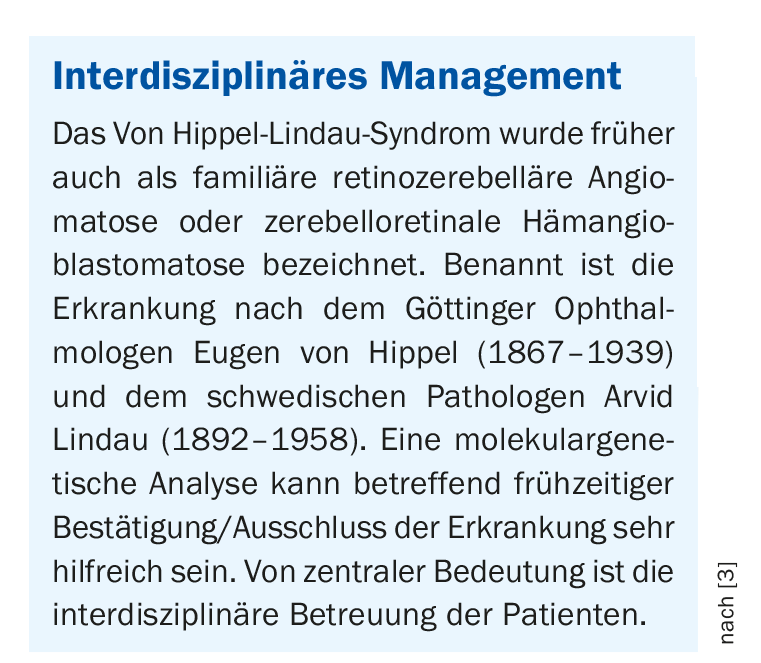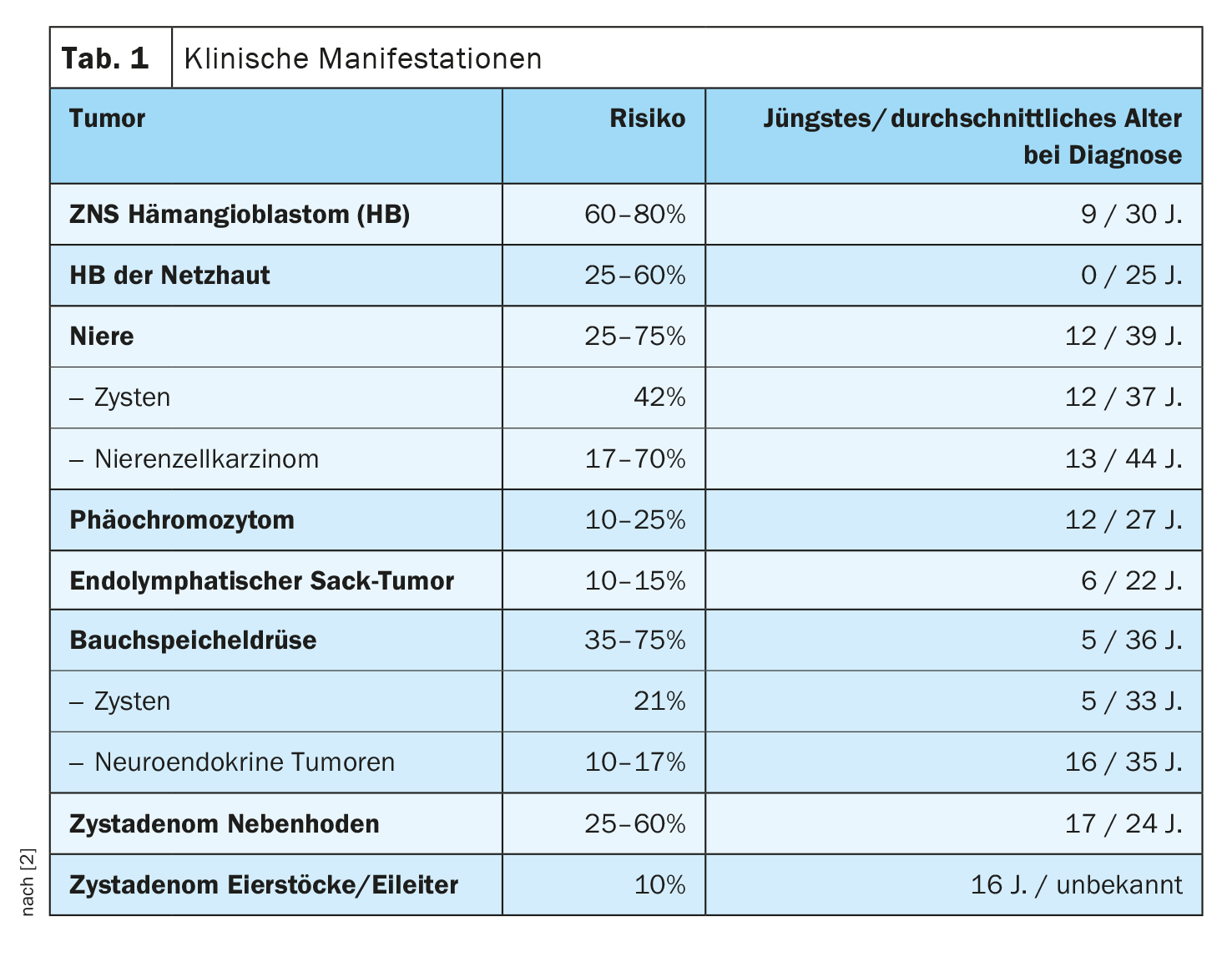Von Hippel-Lindau syndrome is due to mutations in the VHL gene and is characterized by hemangioblastomas of the brain, spinal cord, and retina of the eye. In addition, affected individuals are at increased risk for renal cell carcinomas and renal cysts, pheochromocytomas, cysts and neuroendocrine tumors of the pancreas, endolymphatic sac tumors and cysts of the epididymis, and ovaries and fallopian tubes.
Symptoms depend on the size and location of the tumors [1]. Children may suffer from headaches and feel dizzy or weak. Furthermore, visual disturbances, possibly leading to loss of vision in growing retinal tumors, and hypertension may occur. There may be a loss of coordination. About 10% of affected children have a tumor of the inner ear, which can affect hearing. Without treatment, sufferers can go blind, suffer brain damage or die. Deaths are usually the result of complications of brain angiomas or kidney cancer.

Early diagnosis is of high importance. Phenotypically, different types of Von Hippel-Lindau syndrome are distinguished [1]: Type I is characterized by the presence of hemangiomas in the retina and/or central nervous system, renal cell carcinomas and/or neuroendocrine tumors. However, the risk for pheochromocytoma is very low. Type I is associated with nonsense mutations or deletions of larger gene segments. In contrast, type II is often associated with missense mutations and the risk of developing pheochromocytomas is very high.

Diagnostic criteria
The diagnosis of Von Hippel-Lindau syndrome is considered confirmed when a mutation in the VHL gene is detected and/or [2]:
without Von Hippel-Lindau syndrome in the family in the presence of at least. 2 of the following findings:
≥2 hemangioblastomas of the retina, spinal cord, or brain, or a single hemangioblastoma together with an abdominal manifestation (e.g., multiple cysts of the kidneys or pancreas)
– Renal cell carcinoma
– Phaeochromocytoma
– ELST, cystadenoma of the ovary or fallopian tube/epididymis, or neuroendocrine tumors of the pancreas.
With Von Hippel-Lindau syndrome in the family in the presence of at least. 1 of the following findings:
– Hemangioblastoma of the retina
– Hemangioblastoma of the spinal cord or cerebellum
– Phaeochromocytoma
– Renal cell carcinoma
– Multiple cysts of the kidneys or pancreas
Literature:
- Institut für Klinische Genetik, Universitätsklinikum Carl Gustav Carus Dresden, www.uniklinikum-dresden.de, (last accessed 17.01.2023)
- Medizinische Hochschule Hannover, www.krebs-praedisposition.de/fuer-patienten-und-familien/von-hippel-lindau-syndrom/#diagnose, (last accessed 17.01.2023)
- Baumgartner-Parzer S: J Clin Endocrinol Stoffw 2020; 13: 37-40.
HAUSARZT PRAXIS 2023; 18(1): 47
InFo ONKOLOGIE & HÄMATOLOGIE 2023; 11(1): 32












